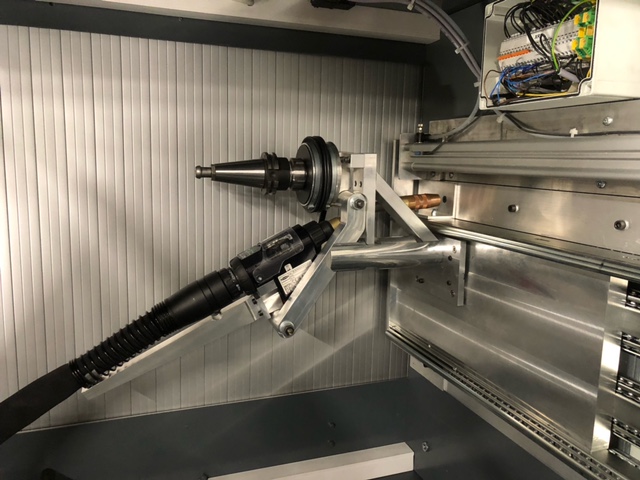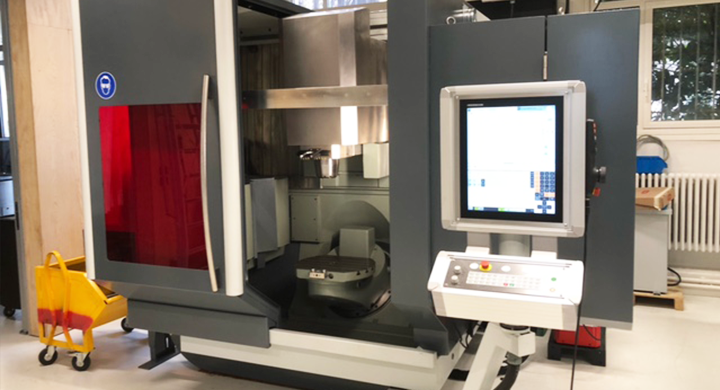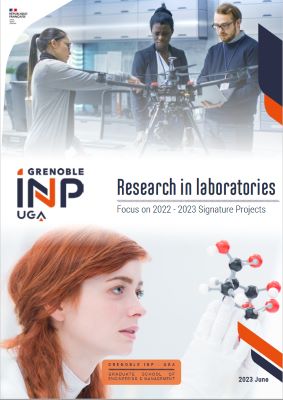More modern, easily manageable and versatile, the new five-axis machining tool recently added to the
GINOVA platform at the S.mart Grenoble Alps hub represents a significant upgrade compared to the old three-axis machine. This tool, acquired second-hand and customised especially for GINOVA by
the company Ratmo, makes it possible to manufacture metal parts with hundredth-of-a-millimetre accuracy, using three translation axes (the same as the old machine) plus two extra rotation axes.
And that is not all. It has also been fitted with a new tool: a wire fusion metal additive manufacturing head. “This additive manufacturing head is handled like a traditional tool, which makes it possible to program movement trajectories while depositing molten material,” explains Alain Di Donato, technical manager of the GINOVA platform at the S.mart Grenoble Alps hub. “This means that material can be added only where needed, with millimetre-level precision by melting metal wire, then finely machining it with 100 times more precision. This combination of technologies provides one-shot manufacturing capabilities that are higher-performing than the former equipment.” As well as saving considerable time, the ability to go from additive manufacturing to fine machining without changing machine makes it possible to produce parts with complex geometry quickly and with greater agility than with a sequential solution: additive manufacturing machine + machining tool.
Research and pedagogical equipment 
First of all, scientists will need to finish developing this machine, unparalleled in France, by trialling steering trajectory strategies. “The main thing is to check that pre-defined trajectories are followed by the machine, and that the produced parts match their digital model,” emphasises Di Donato. After a few months of familiarisation with the equipment, it will be used for research and teaching, particularly for scientists at the G-SCOP** laboratory and students at Grenoble INP – Industrial Engineering, UGA.
At a later date, a 3D laser scanner will be installed on the machine, as an additional tool. “It will be used to check that a part being manufactured matches the digital model, and to proceed with automatic corrections if necessary.” Lastly, a digital twin development project is currently underway, and will eventually allow the machine’s behaviour to be predicted, through digital models.
* Grenoble INP – UGA, UGA, Université Savoie Mont Blanc
**CNRS, Grenoble INP – UGA, UGA





